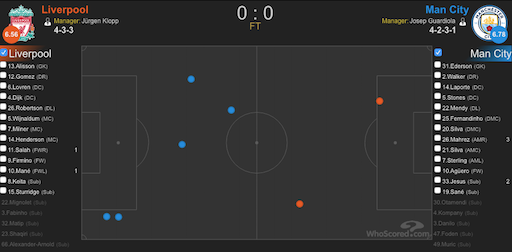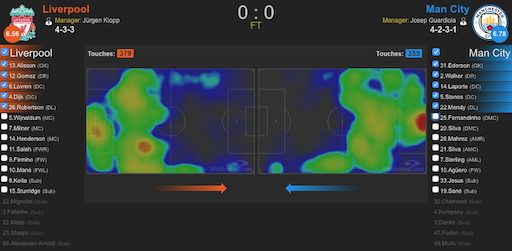WORLD CLASS COACHING
Defend Like the Pro's
By Luca Bertolini
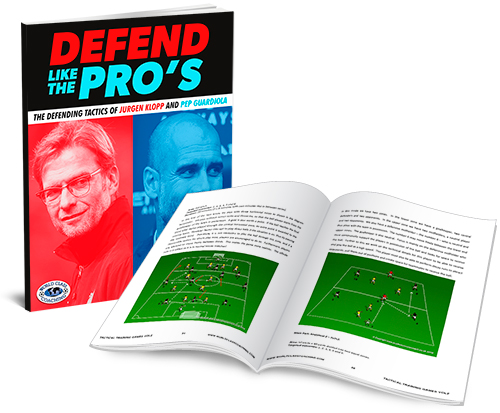
Table of Contents
PART ONE
First Game Analysis
Defending Data - First Game
PART TWO
Second Game Analysis
PART THREE
Defending Data - Second Game
PART FOUR
Analysis of the Goals
First Game Analysis
In this match, the defenses beat attacks. The first leg was a very peculiar match, considering the attacking style soccer of Jürgen Klopp and Pep Guardiola.
The three previous matches between Liverpool and Manchester City had created thrilling results: 5-0 for City in January 2018, 4-3 for Liverpool in the second leg of Premier League, and 3-0 for Liverpool in the Champions League quarter-final first leg in April. They were the Premier League unbeaten leaders in this early match of the season. The managers’ respect for each other and the missed penalty in the first minutes by Mahrez created a more tense 90 minutes than ever.
Liverpool's wins were based on two three-goal blitzes in each game (3 in 9' in the first game and 3 in 19' in the second, scored through intense pressure by the attacking trio of (Firmino, Manè and Salah).
In this first leg we are going to analyze, Guardiola tried not to let it happen again if we pay attention to his words after the match: "If it is an open game at Anfield, you don't even have one percent of a chance. Up and down, they are the best team in the world in these offensive/defensive transitions; it [Liverpool] is built for that. In those situations they are much better."
Citizens were still looking for attacking options, but they were more conservative, slowing down the rhythm of play, trying to engage Liverpool inside more calm open play situations.
No Premier League match this season had fewer shots, three, in the first half so far. The first shot on target came from City's Mahrez in the 62nd minute, followed by one from Liverpool's Mohamed Salah 35" later.
Some data are very explicative to explain the 0-0 draw:
The attempts to score were very few, considering the styles of Liverpool and Manchester City, which always try to attack, although through different ways.

The chances coming from open play situations, which is a normal trend for both teams, even if with different basic tactical ideas, were very poor.

The complete lack of counter attacks, especially on Liverpool side, confirms that the first aim was not to concede scoring chances to the opposition.

Liverpool's 1-4-3-3 was positioned with blocked center backs (Van Dijke and Lovren), the fullbacks constantly pushing forward (Robertson and Gomez), two alternate balance midfielders (Henderson and Wijnaldum), one advanced midfielder with pressure tasks (Milner) and three close forwards (Manè, Salah and Firimino, who used to drop back into the midfield zone) to create space on the flanks for the fullbacks inside the final third, when in possession. The same formation structure was maintained also to face the opposition possession phase, pressing high or dropping into a mid-block.
Klopp's squad played without the usual high pressure after the first 25', countering the building up phase of Manchester City only when playing with the goalkeeper.

A defensive middle block was preferred to prevent City from progressing forward to Bernardo Silva and David Silva...

...playing 1 v 1 duels against the opponents in possession...
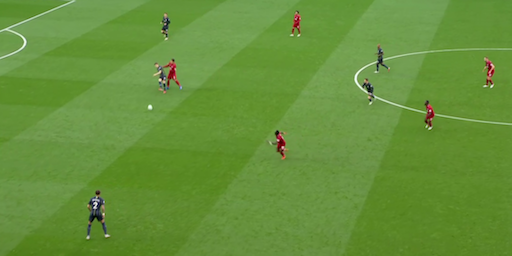
...in the middle third...
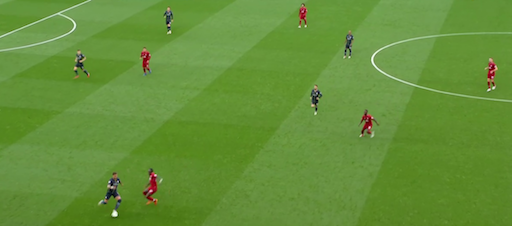
...along the flanks...
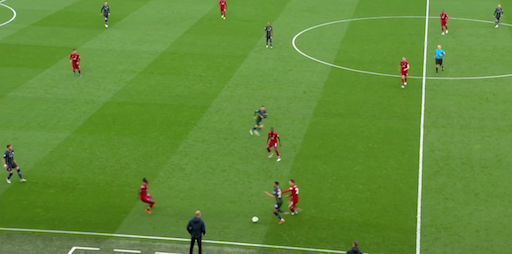
...and in the final third.
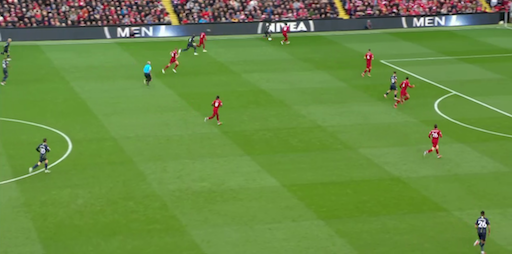
Manchester City’s 1-4-2-3-1 turned to a 1-4-4-1-1 (2) without possession, as the inverted wingers (Mahrez and Sterling) dropped back to cover the flanks and David Silva (21) was usually placed behind the only center forward Aguero (10). Mendy (22) was often placed high to support the attacking move, leaving a line of three at the back (Danilo, Stones and Laporte). Fernandinho (25) played as a balance player, as usual, and Bernardo Silva (20) was left free to move and to receive throughout the middle third.
Despite Guardiola's classic defending masterpieces, such as the creation of strong side around the ball...
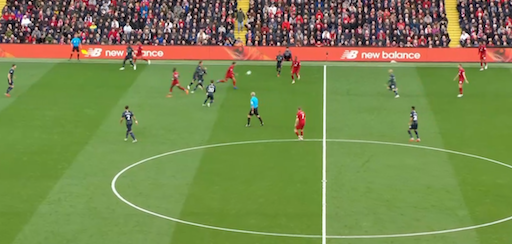
...and the pressure on the opposition ball carrier,
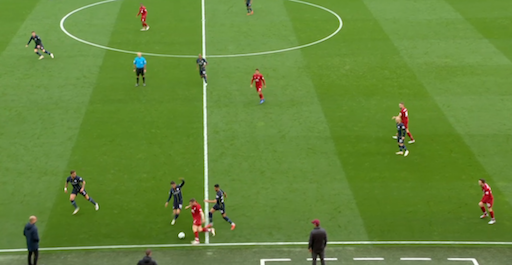
Manchester City preferred to defend deeper inside their own half. This choice was exactly the opposite from what was known about his teams. The space coverage was the first tactical choice just after a pressure transitions phase instead of reinforcing the same pressure phase if it was not effective at the beginning. Guardiola chose to defend back rather than defend high.
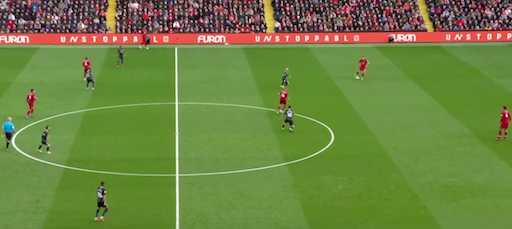
City played two close lines of four in the final third to prevent Liverpool's front three from running in behind the defense line. This positioning caused many problems for the Reds' finishing phase, as Firmino, Manè and Salah often had to drop back deep to receive the ball.
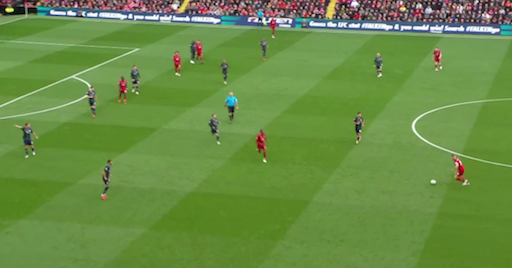
The 1-4-4-1-1 became similar to a 1-5-3-1-1 when the opposition move was played near the 18 yard box; the back four remained place narrow inside the box, and one of the midfielders shifted across the ball area (Bernardo Silva is countering Manè in the following example), when outside, to help the dropping winger. This allowed the fullback to stay placed near the center back.
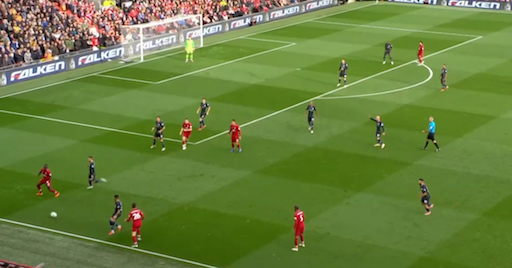
The importance of the balance midfielder for Guardiola is one of the characteristics of his Barcelona seasons (Busquets first, then Xavi Alonso). Looking at the defenders’ heat map with Fernandinho, the balance players of these Man City years,
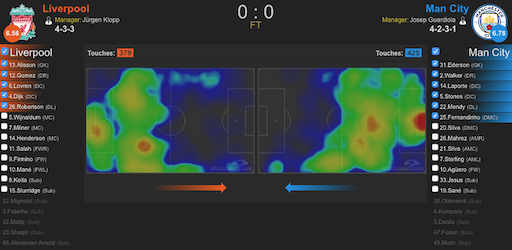
or without him. The cover role in front of the defense line and along the left side of the field, as this flank usually faces more attacks, becomes very clear.
1st leg defending data
Looking at the dispossession data, we realize that Liverpool defended more inside their own half too, despite the usual high pressure, avoiding direct duels in the middle third. City recovered the ball on the flanks more than all the other zones of the field, as Liverpool tried to exploit the sides, through the offensive players’ speed. The narrow back four saved the final third and the goal space as plotted by Guardiola.
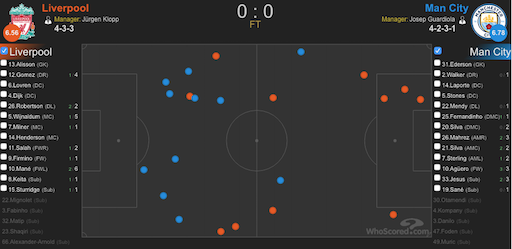
From the interceptions data, we see that Man City recovered the possession on the center left, as Liverpool tried to press and attack their left fullback Mendy inside the box, catching the long aerial in behind passes toward Salah. Both teams tended to close the space in the middle third, forcing the opposition possession out, rather than counter the opponents through direct duels.
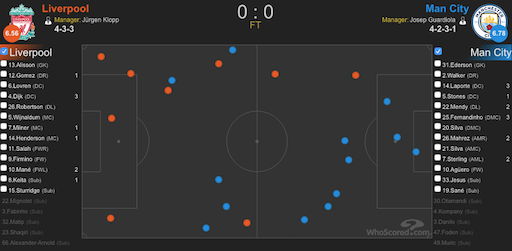
Tackles data are again very explicative; counter directly inside the defensive half and outside and cover the final third to avoid through passes in behind of the back line.
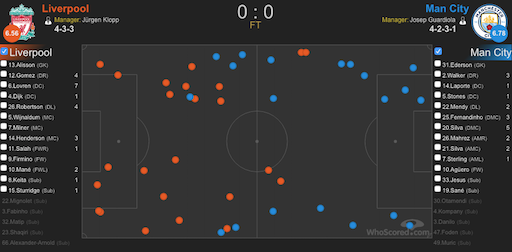
The turnover data confirm what we were talking about before: Liverpool looked at the left side of Manchester City as the easier zone to win the ball back and to try to attack along the side or to build up possession phases. On the other side these data show that City defended much deeper than usual, pressing the opposition while building up but paying attention to shape a close 4-4 formation during the phases without possession if Liverpool could progress.
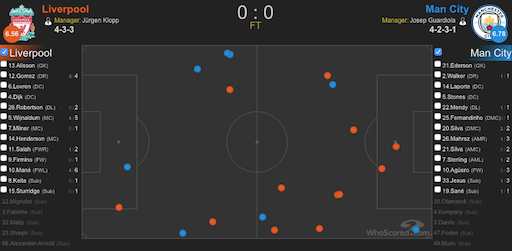
The overloading of the left side by Manchester City and the attacking trend down the right side of Liverpool are confirmed by the fouls map.
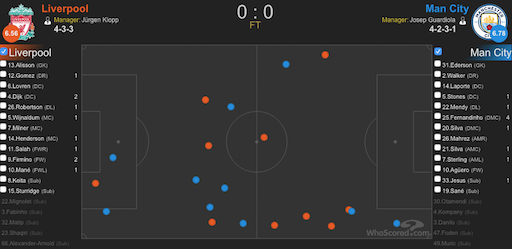
To protect the first third from the speed skills of Liverpool’s advanced players and the through pass ability of Manchester City were the main objectives for both teams.
In this following picture, we show the head clearance data. It's clear how Manchester City had to fight against long balls toward the box or, anyway, in behind the defense line. The few head clearances of Liverpool defense came from corner kicks and few crosses.
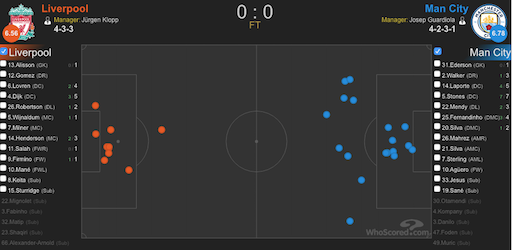
The aerial duels heat map shows us Manchester City was able to defend very well the final third, being able to stop the attacking long passes out of the box and defending well also along the flanks (left one moreover), against the switches of side of Liverpool. As usual, long balls were used by Manchester City to move the opposition through safe passes rather than to take the move to the final stage.
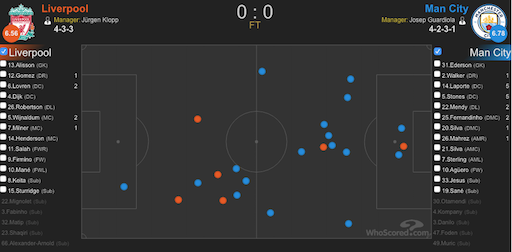
Feet clearances show that Liverpool defended deeper inside the box to defend against Manchester City passing combinations. On the other side, Manchester City countered the opposition attempts trying to close the moves outside of the box or as far as possible from the goal.

The very few offside calls of the match confirm that the defense lines were placed deeper than usual for both teams.
